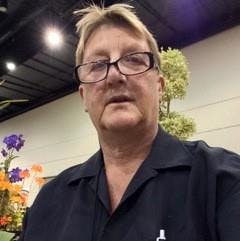
Carol Klonowski

Biography
Carol Klonowski has been growing orchids since the 1980's when a friend in Berkeley, California, gave her a cattleya and it bloomed out with three big, dark lavender flowers and an intoxicating fragrance. She built an entire greenhouse in her backyard to accommodate the precious plant, which only led her to buy more orchids. Then another friend gave her a gift membership to the Orchid Society of California and it's been a serious hobby and passion ever since. She can recall going to monthly meetings where orchid legends such as the late Frank Fordyce would be available to answer the many questions an eager hobbyist could ask. Carol is currently the President of the Orchid Society of California and an Accredited Judge with the American Orchid Society, California Sierra Nevada Judging Center and serves as a Trustee on the Board of Directors for the AOS.
Talks and Abstracts
Dendrobiums of New Guinea
Tolumnias
The History of Cattleyas
Vandas and Vandaceous Breeding
Multifloral, Complex, Maudiae, and Asian Paphiopedilums
Zygopetalums and Their Hybrids
Overview of the Boat Orchids, the Genus Cymbidium
Asian Cymbidiums
Heat Tolerant Cymbidiums
Deciduous Dendrobiums and Their Winter Care
Bulbophyllums of New Guinea

FREE ACCESS: Orchid DealWire
Get notified when orchid vendors have special promotions and exclusive savings.







